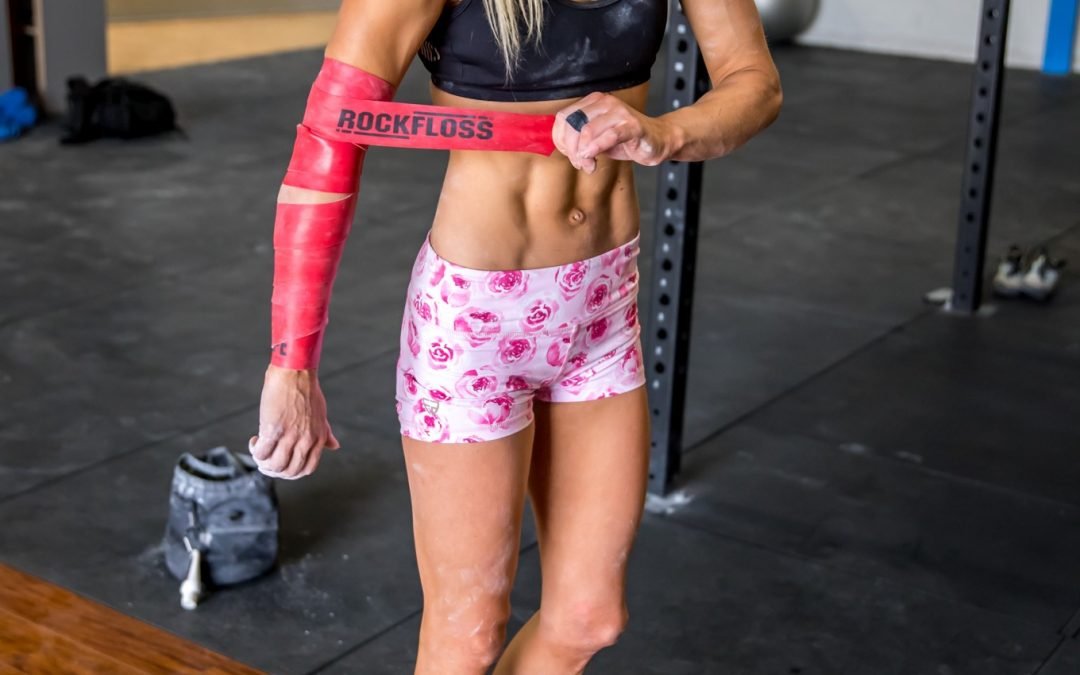Should you be Flossing daily? A beginner’s guide to RockFloss.

Floss bands are not a new concept. They have been around for a while now under various names. In Australia, they have been mostly used as part of a warm up routine for gym workouts, particularly in the CrossFit world. But they can also be a useful tool in the clinic treating patients as another addition to your soft tissue treatment arsenal. If you want more information on how to use these bands in a simple way, read on!
What can they be used for?
Floss bands can be used in a number of different ways but in this blog we are going to focus on two of the most common applications:
1. Oedema management
2. Targeted soft tissue treatment
Floss bands should generally be applied from distal (furthest down the limb) to proximal (higher up the limb). Wrapping in this direction will have less pressure on the valves that exist in the veins as the pressure imparted by the floss band will move the blood towards the heart, avoiding back-pressure on the venous valves. Various tensions can be used when wrapping the floss band, depending on the way you are trying to use the band. The Floss band is generally overlapped by approximately half its width as it is wrapped up the limb.
Floss bands are generally left in place for 2-5 minutes, depending on the tolerance of the person, and should always be removed if any undue discomfort is felt.
Oedema management
For those clinicians and patients that find compression helpful in the management of oedema, floss bands can be wrapped at up to 50% tension over the swollen region. Whilst wrapped, the area can be gently exercised in either a non-weight-bearing fashion, or in weight-bearing, or 1-2 minutes of both. The combination of compression and movement can be helpful in reducing swelling and pain. If helpful, this can be repeated several times per day.
Targeted soft tissue treatment
In this instance the floss band is applied over an area of muscular “tightness” or soreness. The wrap is started below the target area and finishes above it. This time the band can be applied with up to 70% tension over the target tissue, with the remaining wrap around the limb being applied with less tension. For example, if wrapping the calf, the band is pulled with more tension over the calf and less tension as the band is wrapped over the front of the shin. Once again, exercises can be performed in non-weight-bearing or weight-bearing, and even sport specific tasks can be completed eg squats, run throughs etc. The theory behind the approach is that the skin and superficial tissue is restricted in its movement by the compression of the band, and the movement of the limb means the deeper structures are still required to slide/glide, potentially creating an internal shearing effect within the tissue, possibly improving the slide/glide capability of the area. This “pin and stretch” approach is not unlike the effect that can be achieved with a foam roller or spikey ball, but with floss bands the movements are not restricted to floor-based or pushing up against a wall to “pin” the tissue with the ball/roller, making them more versatile in location of use, as well as potentially more functional in movement patterns utilised.
Whilst the research evidence for the use of floss bands is in its infancy, they appear to be a simple, portable, low-tech option for self-treatment of muscle injuries and swelling control. In a future blog post, we will look at some other ways to use Floss bands in the clinic and for the patients at home.
